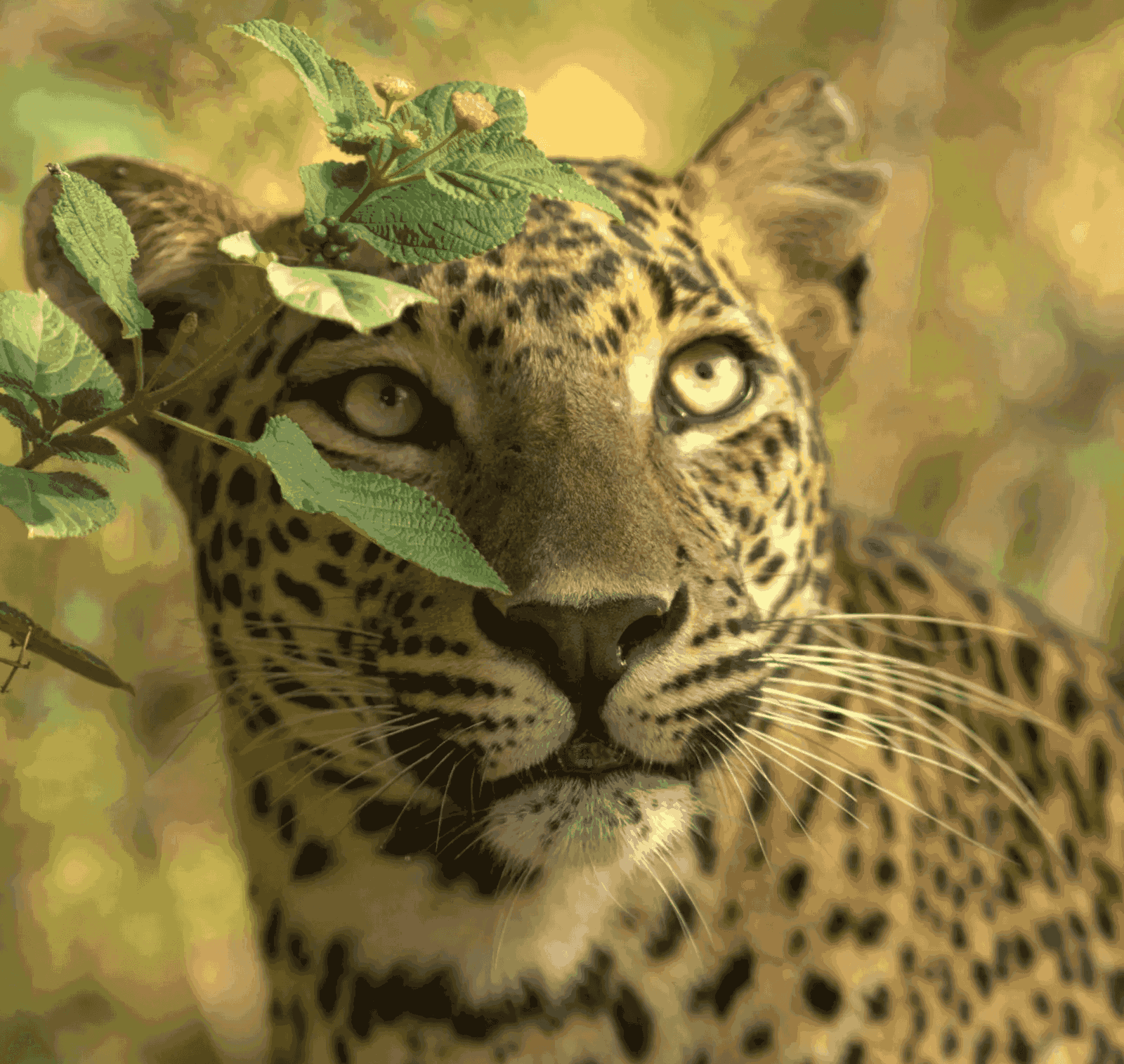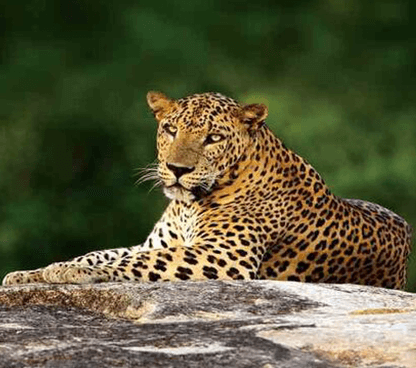
Sri Lankan Leopard (Panthera pardus kotiya) are the largest of the four recognized leopard subspecies in Asia while they are smaller and more slender than their African counterparts. They have a slightly stockier build and shorter legs compared to aAsian other leopards.They are primarily found in lowland dry forests, but can also be found in other habitats including montane forests and scrublands. They are endemic to the island of Sri Lanka, making them a unique subspecies found nowhere else in the world. They typically have a golden-yellow coat with distinctive black rosettes and spots. The coat coloration can vary depending on the habitat. Adult males (called toms) can weigh between 60 to 90 kilograms (132 to 198 pounds), while females (called queens) are slightly smaller. They are primarily found in lowland dry forests, rainforests, and scrublands across Sri Lanka, including protected areas like Yala National Park and Wilpattu National Park.
Sri Lankan leopards are solitary animals, except during mating or when females are raising cubs. They are territorial, marking their range with urine and scratch marks on trees to signal their presence to other leopards. Female leopards (queens) reach sexual maturity at around 2 to 3 years of age, while males (toms) mature later, at 3 to 4 years.
Females give birth to 1 to 4 cubs per litter, with 2 being the average. Cubs are born blind and helpless, relying entirely on their mother for protection and nourishment. Sri Lankan leopards are opportunistic hunters and their diet primarily consists of small to medium-sized mammals such as deer (like the axis deer), wild boar, monkeys, and smaller prey like rodents and birds. They are known for their stealth and agility, using their keen senses and powerful jaws to ambush and capture prey. In the wild, Sri Lankan leopards can live up to 12 to 15 years, though some individuals in captivity have lived longer.
